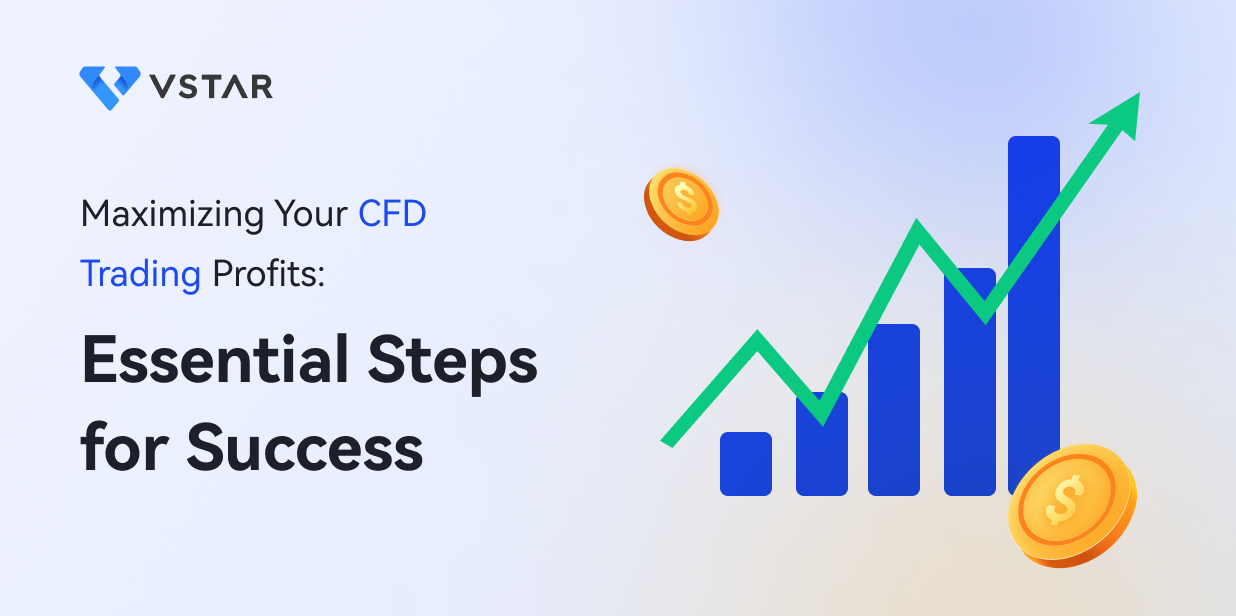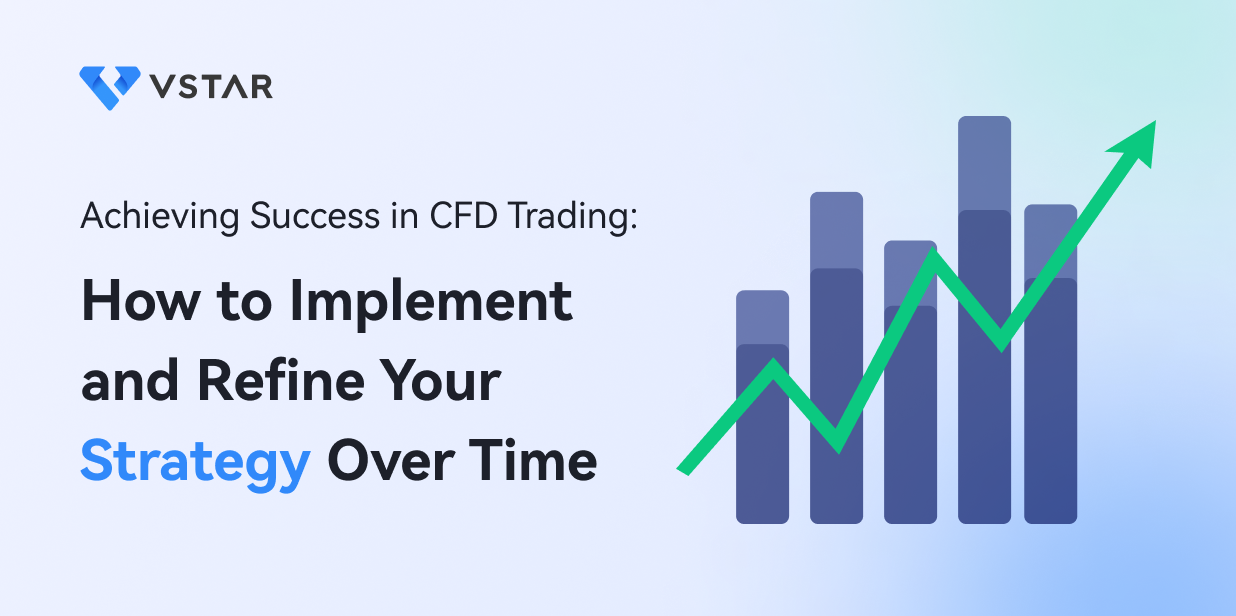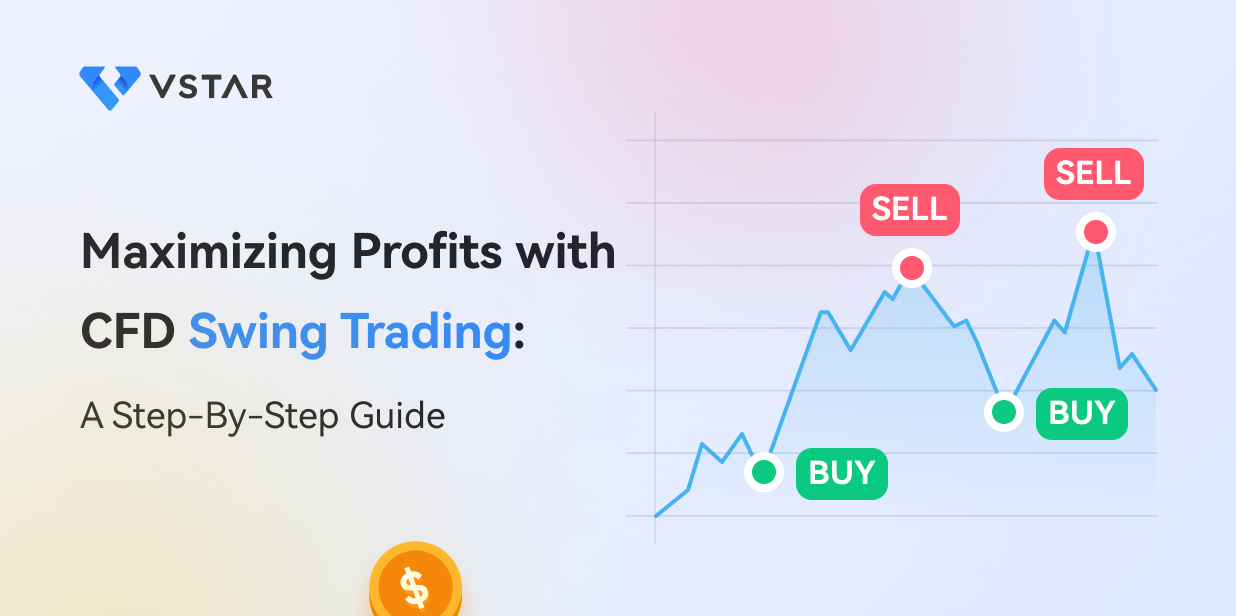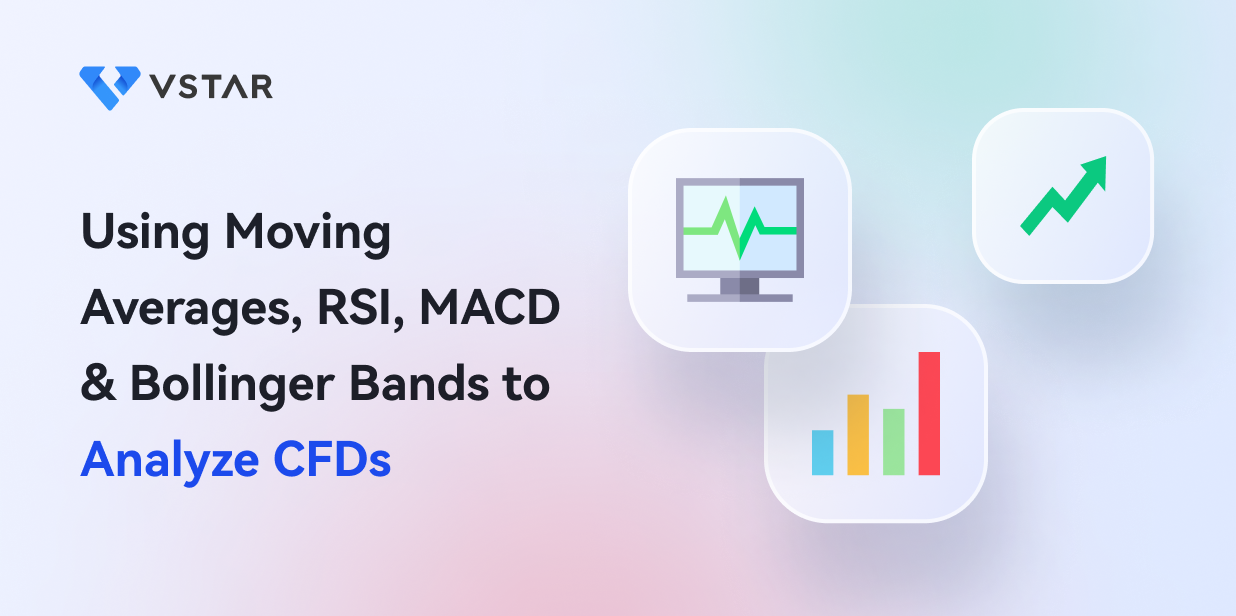Understanding CFD Trading
CFD trading has quickly become one of the most popular ways to benefit from the Forex market. It involves speculating on the exchange rate of currencies.
If you expect it to rise, you can "go long" (buy). Conversely, you can "go short" (sell) when you predict a price fall.
Your CFD broker will pay or charge (profit or loss) you the difference between the trade's entry and exit points. Therefore, there is no ownership of any currencies.
It is also the same with shares, commodities, or indices CFD trading. You won't own any assets but only make profits by predicting their future price movement.
Benefits and Risks of CFD Trading
CFD trading has become widely accepted across several asset classes due to the following benefits:
● Ease of execution: In CFD trading, you only need to go long or short when you expect the rate to rise or fall. Your broker will calculate your total gain or loss and should credit you immediately after closing a trade.
Other Forex trading methods are more complicated.
● High leverage: Most CFD brokers offer high leverage. It helps interested traders without massive capital to still participate and make profits.
Leverage can significantly multiply your gains, like it can enlarge your losses. Hence, be careful when using this advantage.
● Low fees: CFD brokers like VSTAR offer some of the most reduced charges. It will assist in your goal of maximizing trading profits.
Despite the attractive benefits of CFD trading, you must be aware and comfortable with the following risks:
● Poor regulation: CFD trading is poorly regulated, which can be discouraging. Thus, experts consider it riskier, especially when your broker doesn't have an excellent reputation.
● Acceptance: CFD brokers' poor regulation has caused some countries to ban them. The United States, Belgium, and Hong Kong are examples of such.
Therefore, it is illegal for residents of these nations to trade on CFDs.
● Unreliable brokers: Another consequence of CFDs' weak regulation is the increased opportunity for scams.
Fraudulent brokers' goal will always be to earn funds from their traders without paying them their due profits.
Fraudulent brokers' goal will always be to earn funds from their traders without paying them their due profits.
CFD Trading vs. Traditional Trading: What Is The Difference?
Traditional (spot) Forex trading and CFD trading have similarities, like their over-the-counter nature. Their transactions don't involve any intermediary (just a trader and a broker).
However, the following are significant differences you must understand:
● Ownership: Traditionally, every trade in the financial market should result in ownership of some assets. In retail spot trading, the broker prevents this by rollovers of overnight open positions.
On the contrary, you only earn funds by predicting the price movement in CFD trading.
● Regulation: Most countries have regulatory bodies that oversee traditional Forex trading. They set rules that related brokers obey, which prevents fraud.
However, no solid body recognized by the government regulates CFD trading. It makes every activity riskier, especially for the traders.
● Fees: The charges for running a spot and CFD trading accounts may vary. For example, institutions don't pay spreads because they don't trade with a broker.
On the other hand, retail spot traders will pay spreads for every trade and swap fees if they leave their positions open overnight.
Performing Fundamental Analysis for Profits in CFD Trading
To make profits from CFD trading, you must learn to read prices properly for informed decisions. One of the best ways is by fundamental analysis.
Fundamental analysis means determining the true value of currencies. You can achieve it by understanding various factors that affect them.
If such factors are positive, the currency's value should increase, and you can profit by going long in CFD brokers. Conversely, the price should fall if there are unfavorable events, and you may consider going short.
The factors impacting them can be economic, political, natural, or social.
For example, assume the Federal Reserve increases the interest rates. The U.S. dollar may become more valuable due to the increased demand.
Therefore, fundamental analysts may expect bullish conditions in currency pairs that the USD is in the base position. Some examples include USDCHF and USDJPY.
On the contrary, any event that causes a reduced USD demand may lead to bearish markets.
Identifying Financial Tools for Fundamental Analysis
Market research in fundamental analysis involves seeking real-world factors that could affect asset/currency prices. They should be significant enough to cause a prolonged trend (bullish or bearish).
Hence, you need proper tools to help discover them, like the following:
News Releases
Since the factors affecting a currency may be economic, political, or social, the news is arguably the best fundamental analysis tool.
There's no significant event that blogs, broadcasts, or newspapers won't cover.
For example, news channels are usually the first to report terrorist attacks, natural disasters, election updates, and even central bank monetary policies. They will influence market sentiments, affecting a currency's supply and demand.
As a fundamentalist, you should understand how every major report will affect the market. If it is generally positive, you can expect bullish conditions (going long on CFDs) and vice-versa.
Annual Reports
Usually, shareholders and potential investors study corporate reports to evaluate a company's performance. They contain enough information about all the activities in the previous year.
However, traders interested in shares or index CFDs can use such reports to forecast long-term price movement.
It's advisable to opt for public companies that open their report to regulatory bodies like the Securities and Exchange Commission (SEC).
An upcoming positive event, such as implementing the latest technologies, may cause prices to increase. On the contrary, the government may introduce new tariffs that can hinder a company's growth.
What you expect of the approaching conditions will determine if you go long or short for more CFD trading profits.
Economic Calendar
Economic calendars are one of the most public tools for fundamental analysis. They contain dates with significant events that can influence the market.
Hence, by tracking them, you can wait for their reports to understand their possible impact.
For example, following the economic calendar can remind you when the BLS will release the Consumer Price Index (CPI). Then, you could make informed decisions based on the report that can influence financial markets significantly.
PS: Economic calendars hardly report unexpected events, such as wars, natural disasters, etc. Thus, combine it with other tools for better decision-making.
Understanding How to Profit from CFD Trading Through Technical Analysis
While fundamental analysis requires constant attention to market-moving events, technical analysis gives them little or no attention.
It involves seeking past price behaviors and expecting them to repeat.
As they begin to form on the charts, technical analysts anticipate their results, which provides an opportunity to profit from them.
For example, a technical analysis trader may have a trading plan demanding the price to cross a Moving Average to enter or exit trades. Hence, there will always be an order execution immediately after a candlestick crosses.
If the plan is solid, such traders will have profitable CFD trades.
Identifying Patterns and Trends in Price Charts
As fundamentalists use several reports to find profitable trading opportunities, technical analysis traders try to spot the following in charts:
● Patterns
● Trends
● Support & resistance levels
Depending on how you've studied their history, you can build a trading plan based on them. Thus, when the price starts behaving a certain way, there'll be a strategy to gain from it.
For example, a price action trader may suspect an inverted head and shoulders pattern forming on the chart. When the price breaks above the neckline above, it signals a trade entry, which can be profitable, as seen below:
Support and resistance levels may also prevent the price from passing through, forcing it to return below or above.
Such price patterns or responsive levels can give rise to short- or intermediate-term trends. They offer the best conditions for profit-making in CFD trading.
Using Technical Indicators To Aid in Trading Decisions
Aside from price actions, technical analysts plot indicators on the chart to discover profitable opportunities. They are lines based on various calculations, such as trend, volume, or volatility.
Hundreds of technical indicators are available today. Some are simple and just one or two lines on the charts. Conversely, others (like oscillators) can be complicated, taking a whole section.
Therefore, your trading plan should guide you to the best.
Regardless, here are some popular indicators to consider if you've never used them to maximize your CFD trading profits:
● Moving Average: A Moving Average is a one-line indicator that can act as a trade entry or exit signal. However, some technical analysts can combine two or more on the chart.
● Relative Strength Index: The RSI is an oscillator - it provides overbought and oversold levels to guide your decisions.
Most times, technical analysts expect an upcoming uptrend when it is overbought and a downtrend when oversold.
It can provide highly profitable trade signals when combined with price action concepts.
● Bollinger Bands: Bollinger bands consist of two standard deviations and a moving average in the middle.
You can use it to find support and resistance levels (above and below the bands). However, others measure volatility with them to learn when to avoid trading at high risk.
Maximizing CFD Trading Profits By Managing Risks
Proper analysis will certainly help you become profitable in CFD trading. Regardless, you need solid risk management strategies to maintain and maximize gains.
You will always make losses as a professional CFD trader. Therefore, limiting how much you could lose for potential profits will make you successful in the long run.
Here are some of the many ways you can manage risks efficiently:
● Sticking to an ideal risk-reward ratio depending on your long-term trading goals
● Setting take profit and stop loss (or trailing stop) orders on every trade.
● Understanding and managing your leverage efficiently
● Calculating the best position sizing based on your account size
● Strictly avoiding emotional decisions
Setting Stop-Loss Orders To Minimize Losses
Without regarding stop-loss orders, your risk management strategy will never be complete. They minimize losses based on your tolerance, which is an indirect way to maximize profits.
Failure to set them will open you to the maximum risk (and potentially blown account) in every trade.
A trailing stop order will be better if you expect a strong trend approaching. It is like a stop-loss order that follows the price as it moves in your predicted direction.
Therefore, it will secure maximum profits while protecting you from negative moves.
Managing Leverage and Margin Requirements
As discussed, CFD brokers will grant you leverage to control significant funds by donating only a fraction. Thus, it can multiply your wins massively.
On the contrary, a few multiplied losses can blow your account if you don't manage them well.
Hence, you must understand position sizing and how to set it based on your leverage. It will help determine the final units (lots) of a currency pair you should buy/sell.
Divide your account risk by the trade size to calculate your ideal position size.
However, you can use the lot-size calculators available online, if it seems too complex.
Avoiding Emotional Trading Decisions
Your emotions will be one of the most hindering factors to obeying your risk management rules. Greed, fear, and overconfidence are some common examples.
They aren't easy to control as humans. Regardless, try to build your discipline whenever trading.
Emotional trading decisions will backfire in the long run because they don't depend on sound reasoning. You'll fail to obey your risk management strategy when following them, making trading like gambling.
Therefore, consider the following tips to avoid emotional trading:
● Test your strategy on a demo account
● Trade on lower time-frames if you are impatient
● Take some time away from the charts.
Choosing the Right CFD Broker To Ensure Profitable Trading
Selecting the right CFD broker is also crucial to help you become profitable. Several brokerages are available today with various schemes (honest or dishonest) to attract new traders.
Hence, take your time to identify the best with the following factors:
License
As discussed, CFD brokers are generally unregulated by strict government bodies. However, some try to get a third-party license to build trust with potential traders.
The independent regulators guide the broker's operations to prevent fraud, and every party involved should feel safer.
Therefore, if you are still searching for an ideal CFD broker, ensure it has a license, like VSTAR. It will improve transparency in every trading activity, protecting you from the risks involved.
Reputation
Some CFD brokers have become highly respected because of their honest dealings. Hence, search for them and read all their reviews (positive and negative) to know their strengths and weaknesses.
You can discuss this with your mentor or visit online CFD trading forums to have several traders' opinions.
If a broker has several negative reviews for any reason, such as failing to make payouts or exposing traders' accounts to slippages, look for other options.
Trading Platforms
Every broker has trading platforms it supports. Therefore, be sure of them before making any decision.
Assuming a trading platform is only compatible with laptops/desktops, you won't be able to manage your CFD trades on your mobile. It could be a significant disadvantage, especially when you are far from your computer when there's an active trade.
If you prefer simple applications, other complex trading platforms may not be suitable.
Whatever the case, ensure you are comfortable with a CFD broker's supported platform(s) before choosing it.
Age
Usually, a CFD broker that has been running for years is a sign that you can trust it.
It may signify several traders have tested it enough to be active that long. However, that doesn't mean it is better than every newer broker.
Other criteria discussed, such as reputation and license, may even place a newer broker ahead of older ones in terms of trust.
Hence, research deeply to understand why you should choose a newer or older one over the other.
Commissions and Spreads
Another essential selection factor is the commissions and spreads charged by every broker.
Since you want to maximize profits, going for brokers with the lowest charges is more reasonable.
As for the spread, some CFD brokers, like VSTAR, have very tight ones to satisfy every party involved in trades. The fees and commissions are also some of the lowest.
Regardless, don't ignore other criteria because you're looking for the cheapest.
Maximizing Profits through Effective Practice of CFD Trading
After developing a suitable trading plan that contains your analysis model and risk management techniques, you must test it to ensure it works.
The practice will help you know whether it is capable of making profits or not.
Thus, here are the two most popular ways to do this in a demo CFD trading account:
● Forward testing: Forward testing is the same as live trading, but you only use fake (paper) money for it.
● Backtesting: Backtesting means using past chart information to confirm if your strategy could've worked.
As you do this, analyze the outcomes and look for ways to adjust (improve) the trading plan.
For example, assume you only trade patterns like the head and shoulders patterns. Back or forward testing may reveal that they give better entry and exit signals with a moving average.
Therefore, you can test the new strategy with the indicator.
Practicing Your Profitable Trading Plan on VSTAR
If you're looking for a CFD broker to test your trading plan, consider VSTAR Demo.
It gives you access to all the CFD trading charts that live traders use with zero fees. Technical analysts can also automate their strategies easily for fast and emotion-free results.
Your back and forward tests will run smoothly on the broker's trading platforms for all devices!
Monitoring and Reviewing CFD Trading Results
To become more and more profitable in CFD trading, you always need to assess your results for improvement. It will help your trading plan continuously improve.
Hence, your trading journal should contain the following to review:
● Date, time, and trading session of every trade
● Asset class or currency pair(s) traded.
● Trade results & win-loss ratio
● Psychology while taking trades
● Possible events or news reports during trades
Assessing this information helps to identify your weaknesses. You will hardly make similar errors again, which should always be your goal.
For example, you may discover that your entry signals from a pattern may be valid. However, you may have always been too impatient for them to complete forming.
The review should then improve your trading psychology by making you more patient.
Conversely, if you didn't check that result, you may never know that you should improve your patience to become more profitable.
Final Thoughts
Maximizing profits in CFD trading is not a one-day decision. It takes several careful steps, especially for beginners.
Firstly, you must have an excellent method of analyzing charts, which could be fundamental or technical. You can also combine both for a better understanding of the market.
Then, create risk management strategies based on your trading goals and account size.
Through testing your trading plan with the above details in a demo account, you will learn if it is profitable enough for live trading.
Lastly, continuously evaluate your trading results to learn new ways to improve.



